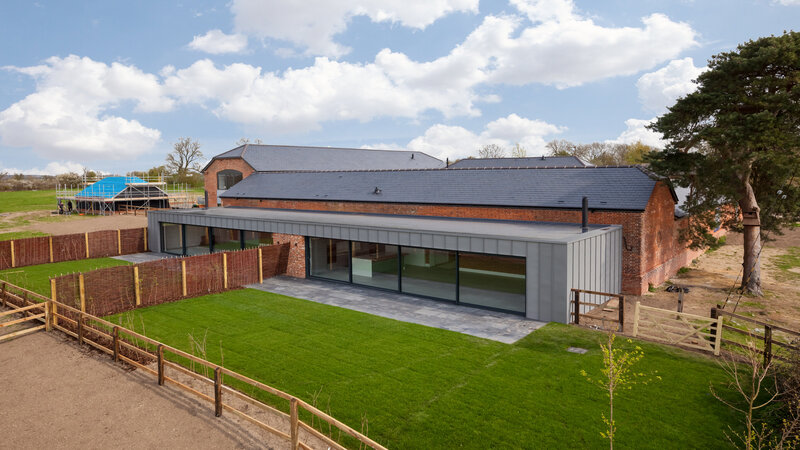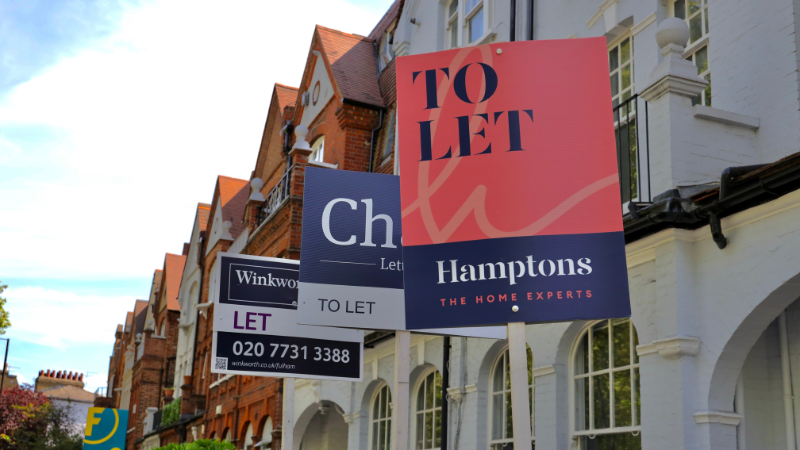Categories
How Much Does a Bridging Loan Cost?

Bridging loans typically cost 1-2% of your loan size, charged as an arrangement fee by your lender.
Written by: Sam Hodgson
You also usually pay:
- A monthly interest rate
- Valuation or survey fees
- Legal fees
- Broker fees
- Other admin fees, such as drawdown and redemption fees
This might seem like a lot, but on the whole, bridging loans can cost less than you might expect - especially if you're using one for the right reasons.
Get started with our calculator
In fact, if a bridging loan secures your property purchase at the best price because you can act fast, it can even save you money.
And the upside is that you secure the property - which for many buyers is invaluable.
Bridging loan costs come through several fees and admin charges. We'd like it to be less complicated, but we can't reorganise the entire property finance industry.
However
It's a longstanding myth amongst first-time bridging borrowers that short-term property finance is woundingly expensive.
We're not here to twist your arm: no responsible broker will persuade you to take on borrowing that you can't afford.
So, here's our straightforward guide to everything you need to know about how much a bridging loan costs.
Key Takeaways
- The main costs to account for when applying for a bridging loan are interest, arrangement fees, valuation fees, and any legal fees.
- Interest rates are quoted monthly and vary based on factors like loan-to-value (LTV), property condition, your credit history
- Despite the expenses, bridging loans can be a cost-effective solution.
- The bridging market is growing, with more competitive rates and increased recognition as a viable short-term financing option.

Why Would You Take Out a Bridging Loan?
We have many clients for whom bridge finance has been the best, if not the only solution - and they haven't resented the costs. And they aren't all multi-million-pound developers with bottomless pockets.
Particularly for clients who are downsizing and have built up a sizeable amount of equity on a home they're selling (or who own it mortgage-free) and have found their dream home that they can't miss out on - the set-up fees and interest cost of a bridging loan is money well spent on the home they plan to live in for ten years or more.
And if you're working your way up the property ladder, hoping to buy a property cheap at auction, or taking on a project that needs a lot of renovation work, bridging finance may be your best and only option to get short-term finance set up in time.
Or, it could buy a house that's considered "unmortgageable" by mainstream lenders.
For more details, watch our video: Bridging Loans Explained: Costs, Timescales, Examples, & How To Get One.
Read through our 100+ bridging loan case studies, breaking down the details of how bridging loan transactions work in practice:
So, What Are The Costs of a Bridging Loan?
Bridging Loan Interest Rates
This is the top-line loan cost you'll be looking at first. This is an "it depends" cost: see below for the factors determining the monthly interest rate you're offered.
Bridging finance interest is quoted as a monthly rather than an annual rate. This isn't to disguise the rate - it's because you may not have the short-term loan for as long as a year. And after the minimum term of the first month, interest is calculated daily. You can pay back your bridging loan anytime, and you'll only pay interest up to the day you repay.
Rates from: Downsizing/Upsizing Releasing Funds From Your Home Short-Term Lease Finance Auction Purchase As at 17th January 2025 Rates from: Light & Heavy Refurb Finance For Unmortgageable Properties Land Purchase with planning As at 17th January 2025 Rates from: Up to 80% LTV Minimum Loan £500k Minimum net income £100k As at 17th January 2025 Thank You for your interest - please complete the form below and a member of our team will be in contact.Residential
Buying Before Selling?
0.55% pm
Development & Refurb
Fast Finance
0.55% pm
Residential
Large Bridging Loans
0.55% pm
Contact Us
See the latest market news below.
2025 Bridging Market Update
The bridging market has had quite a transformation in the past few years. With rates starting at 0.55% per month, the costs aren’t dissimilar from those of a mortgage, and the combination of flexibility, quick turnaround time and less stringent eligibility criteria has led to bridging finance growing in popularity.
It’s now seen as a product in its own right instead of an expensive alternative to long-term finance.
Our finance brokers are seeing more repeat clients, particularly investors who have turned their attention to property flipping considering the slim profit margins the buy to let market has been seeing. HMO conversions have also grown in popularity amid more rigid rental legislation.
According to our team of advisers, a high volume of first-time borrowers already have an understanding of bridging loans before approaching us, showing that bridging is becoming more recognised in the industry.
As bridging finance becomes more mainstream, lenders are reviewing and reducing rates more frequently, offering more flexibility around costs.
6 Things That Affect Your Bridging Loan Interest Rate
1. Your Loan-to-Value Ratio (LTV)
This is the ratio of the loan amount you need concerning the value of your property. The lower the ratio, the lower the interest rate you pay. For example, a 50-60% LTV will get you a much lower interest rate than a 75% loan, and a 100% bridging loan would be the most expensive.
Interest rates are linked to the Bank of England base rate. But interest rates also vary from lender to lender depending on the types of properties and clients that they're comfortable working with.
An experienced mortgage broker with good connections in the industry will take your application to the lender who is best equipped to consider your circumstances most favourably and for whom you'll fit their specific bridging loan criteria.
2. How Much Do You Want to Borrow, and For How Long
Suppose you've already got your "exit" strategy in place (for example, a buyer has already made you an offer on the property you're selling). You're confident you won't need your bridging loan for the entire period. In that case, your broker may be able to find you a lower rate.
Related: How Much Can I borrow?
3. Condition of the Property and What You're Planning To Do
The riskier the proposition, the higher your quoted interest rate may be. A bridging adviser will take down all the details of your plans and forward your case to the best lenders for your case.
Related: Our guide on how to compare the best bridging loans
4. Is it a Regulated or Unregulated Loan
If the property is your home, a bridging loan is regulated by the Financial Conduct Authority to protect you.
If somebody else lives in the property that isn't a family member, you'll need an unregulated bridging loan.
There are fewer regulated lenders in the market than unregulated, so your lending options may be more limited.
But because there are more hoops to jump through with a regulated bridge, a lender's money is safer for your protection, and the rates are generally lower than unregulated loans.
Learn more about unregulated and regulated bridging loans.
5. Location of the Property
If it's in a remote, rural location, a lender may feel that it could be trickier to sell or get a mortgage to repay your bridging loan, so the interest rate could be higher to reflect that risk.
An awkward location could also make your property development plans more difficult and time-consuming.
Regrettably, northern Scotland and rural North Ireland properties are harder to find finance for.
Related: How to get a Brdging Loan in Scotland
6. Your Credit History
In general, bridge finance terms are less focused on your financial circumstances than on the property's value.
If you have a bad credit rating, you may still get bridging finance (when you might struggle to get a mortgage), but it could be at a slightly higher loan rate.
For more information, read our full guide to bridging loan interest rates.

How is Interest Charged on a Bridging Loan?
If you have sufficient cash flow on an unregulated loan, you can choose to pay the interest monthly. Or, you can roll it into the total loan to be repaid at the end of your term.
For regulated loans, all interest is paid at the end when you repay the total bridging loan (to minimise monthly outgoings for a homeowner who's also paying a mortgage).
You will need to know if your interest is charged as rolled-up or retained interest. Rolled-up interest is compounded, but it is cheaper than the retained interest, which is charged at a rate assuming you will have your loan for the full term.
The best interest type for you will depend on your financial circumstances and what you're looking to do - getting bridging advice can ensure you get the right loan for you.
Related: Check out our full guide to bridging loan interest rates and how it works.
Use Our Bridging Loan Calculator
Our bridging calculator can get an approximate idea of what a bridging loan might cost you. But keep in mind that a mortgage broker will be able to fine-tune your expected charges to your circumstances:
5 Bridging Lender Fees You Could Be Charged
1. Facility Arrangement Fees
A facility fee of 2% is standard across the mortgage industry. It may be 2% of either your net or gross loan amount. A gross fee will be more expensive, but most of the lenders we use at Clifton Private Finance charge their fee on the net loan.
2. Loan Drawdown Fees
Lenders also charge a loan drawdown fee (sometimes called an assessment fee or an admin fee), usually about £295 but can vary depending on the number of properties involved.
3. Redemption Fees
There's also a redemption fee when your loan is repaid, which covers the cost of removing the legal charge from your property (or properties). A redemption fee for a bridging loan is usually around £120.
4. Exit Fees
Some lenders also charge an exit fee of about 1.25% when your loan is repaid – at Clifton Private Finance, we generally avoid working with these lenders.
5. Telegraphic Transfer Fees
This is usually only £25 but serves as an additional cost nonetheless.

Bridging Loan Survey Fees
They are also known as valuation fees.
Like with a mortgage, your bridging lender needs to be assured of the market value of the property their loan is secured against, and you'll have to pay for the lender's valuation costs.
Surveyors charge their fees on a sliding scale depending on the value of the property and the amount of work they're assessing that needs to be done.
Survey costs could range from £265 for a property costing £100K that needs light refurbishment but could be considerably higher for a more complex property valuation.
Bridging Loan Legal Fees
Bridging loans are recorded as a "charge" against a property title, so legal costs are involved for you and the lender.
And again, lenders pass on their legal fees to you as the bridging loan applicant.
An average cost of a bridging lender's legal fees would be around £850 + VAT for a property valued at about £250K.
Bridging Broker Fees
Finally, there's your bridging adviser's fee.
We typically charge a flat fee of £995 for setting up the finance on your behalf, but this can vary.
If you've had the experience of looking for the best deal on a mortgage and then handling the paperwork involved in the application, you'll consider this money well spent when you apply this context to securing and pushing through a bridging loan.
When Do I Pay the Charges For a Bridging Loan?
You'll need to pay the following bridging loan fees upfront:
- The survey fees
- The legal fees
- The broker's fee
Everything else, including the interest, can be rolled into your loan and paid at the end of your term.

How Can I Get a Cheaper Bridging Loan?
- If you're buying a property before selling one that you already own and need to bridge the gap, it may be possible to secure your bridging loan against both properties to get a better interest rate. Or, providing more security as a bridging loan deposit could help.
- A good broker will look at all the possible scenarios before they start approaching lenders.
- Some of the bridging lenders we work with provide "dual representation" on their legal work, which means you don't have to pay for a solicitor of your own as well as theirs - we use these lenders when we can, as long as their rates and other set up costs are cheaper for you too.
- Some lenders are willing to do a "desktop valuation" (or AVM: automated valuation model) if your loan to value is low (less than about 50%) or they're familiar with the type of property you have. This will save the cost of sending out a surveyor.
Get a copy of our FREE GUIDE to bridging loans
Just fill out our enquiry form at the bottom of the page and put Bridging Loan Guide in the Message box: we'll send you our Complete Guide to Bridging Loans by email or post.
Get Access to Market-Leading Rates
If you're looking to secure a bridging loan, you may need the help of a specialist bridging broker. A bridging broker can use their network of lenders and market expertise to find you the best deal on the market.
A bridging loan broker can offer comprehensive advice on your options and will help you find the most cost-effective solution. In the right circumstances, a bridging loan can be a quick and affordable means to secure your property.
At Clifton Private Finance, we have an award-winning team of bridging brokers who can guide you through the process.
If you want to discuss how bridging finance could work for you, call us, and an adviser will be able to discuss your situation in detail.
Call us on 0117 959 5094 or book a free consultation below.














